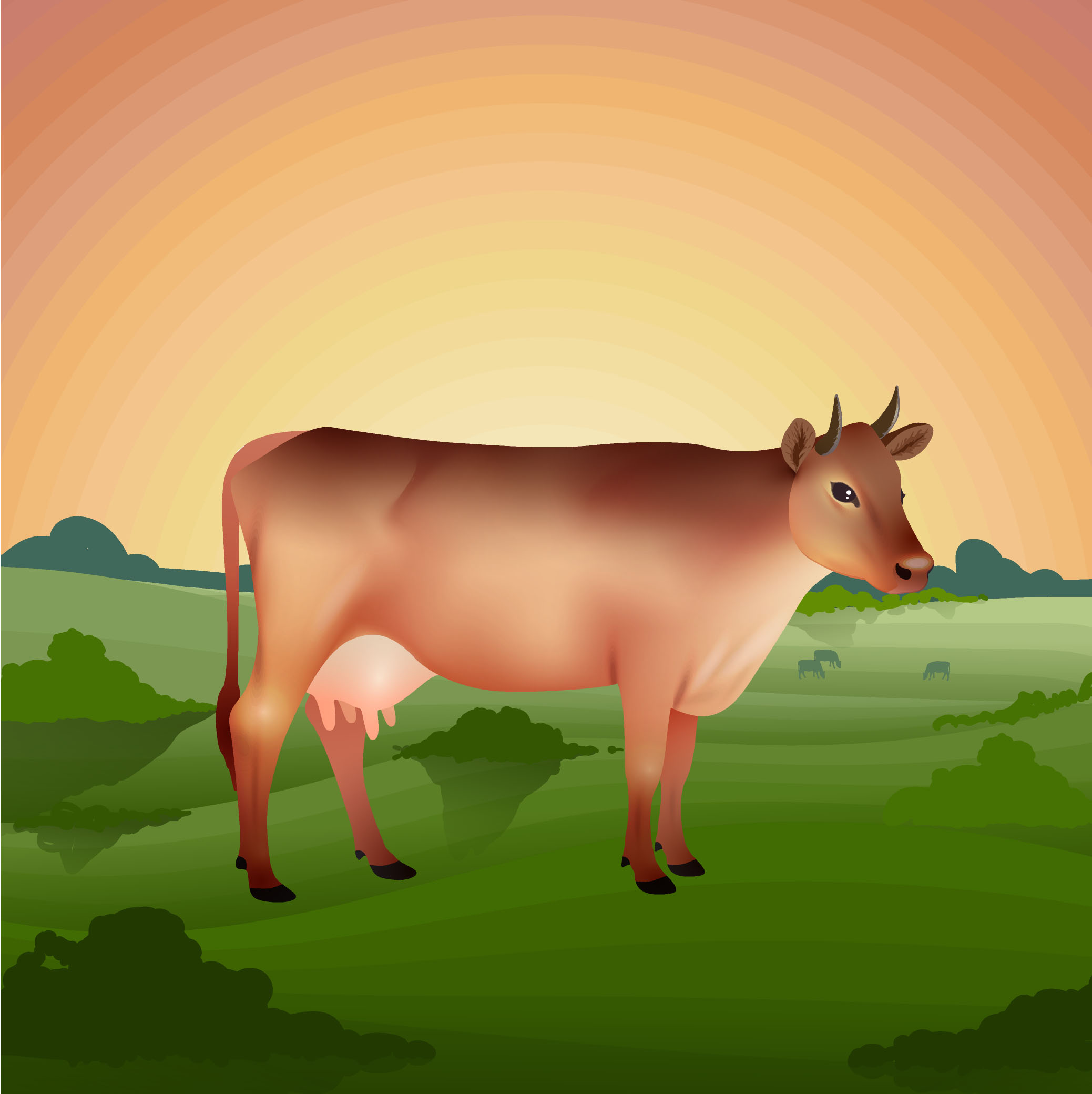
The zoological name of ‘Indian cow’ is
(A) Bos indicus
(B) Bos gaurus
(C) Bubo scandiacus
(D) Bubalus bubalis
Answer
571.8k+ views
Hint: The zoological name of ‘Indian cow’ was originally something different but now known as Bos Taurus. It is a species of domestic cattle that were originally found in South Asia. As it is an Indian cow, it’s zoological name is also related to the word India.
Complete step by step answer:
The zoological name of ‘Indian cow’ is Bos indicus. The common name of an Indian cow is humped cattle or Brahman cattle. Another name for the Indian cow is Zebu. Zebu is used as draught and riding animals, dairy cows, and beef cattle, moreover as for byproducts like hides and dung for fuel and manure. Some 75 breeds of zebu are known to date. Indian cows have humps on the shoulders, large dewlaps, and droopy ears.

So, the correct answer is ‘Bos indicus’.
Additional Information:
Characteristics of Cow:
High shoulder, and have skin that hangs beneath the lower jaw or neck.
Sweat glands are wider and the sweat is aromatic, protecting from monsoon-insects.
With small hair, the skin remains clean.
The tail is long enough to touch the ground. The tail joint is a unique characteristic of an Indian cow and allows swirling around till the neck. It also helps in swats, flies, and insects.
Some Indian breed cows produce up to twenty liters of milk per day. The main types of Indian milk cows are Gir, Sahiwal, Tharparkar, Rati, and Sindhi.
Note: The scientific name of Indian cow was originally Bos indicus, but they're now more commonly classified within the species cattle as B. t. indicus, along with side taurine cattle (B. t. taurus) and therefore the extinct ancestor of both of them, the aurochs(B. t. primigenius).
Complete step by step answer:
The zoological name of ‘Indian cow’ is Bos indicus. The common name of an Indian cow is humped cattle or Brahman cattle. Another name for the Indian cow is Zebu. Zebu is used as draught and riding animals, dairy cows, and beef cattle, moreover as for byproducts like hides and dung for fuel and manure. Some 75 breeds of zebu are known to date. Indian cows have humps on the shoulders, large dewlaps, and droopy ears.

So, the correct answer is ‘Bos indicus’.
Additional Information:
Characteristics of Cow:
High shoulder, and have skin that hangs beneath the lower jaw or neck.
Sweat glands are wider and the sweat is aromatic, protecting from monsoon-insects.
With small hair, the skin remains clean.
The tail is long enough to touch the ground. The tail joint is a unique characteristic of an Indian cow and allows swirling around till the neck. It also helps in swats, flies, and insects.
Some Indian breed cows produce up to twenty liters of milk per day. The main types of Indian milk cows are Gir, Sahiwal, Tharparkar, Rati, and Sindhi.
Note: The scientific name of Indian cow was originally Bos indicus, but they're now more commonly classified within the species cattle as B. t. indicus, along with side taurine cattle (B. t. taurus) and therefore the extinct ancestor of both of them, the aurochs(B. t. primigenius).
Recently Updated Pages
Master Class 11 Business Studies: Engaging Questions & Answers for Success

Master Class 11 English: Engaging Questions & Answers for Success

Master Class 11 Computer Science: Engaging Questions & Answers for Success

Master Class 11 Social Science: Engaging Questions & Answers for Success

Master Class 11 Maths: Engaging Questions & Answers for Success

Master Class 11 Biology: Engaging Questions & Answers for Success

Trending doubts
Differentiate between an exothermic and an endothermic class 11 chemistry CBSE

10 examples of friction in our daily life

One Metric ton is equal to kg A 10000 B 1000 C 100 class 11 physics CBSE

Difference Between Prokaryotic Cells and Eukaryotic Cells

State the laws of reflection of light

Explain zero factorial class 11 maths CBSE




